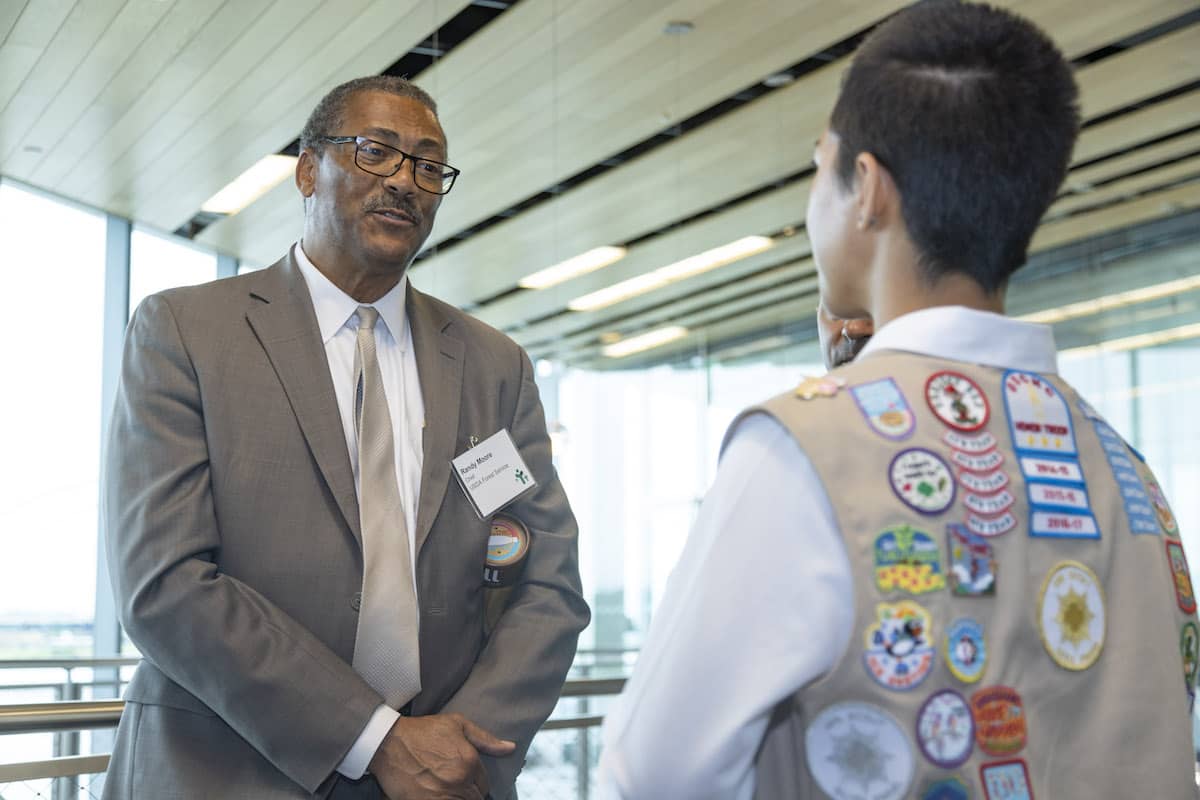ZOE BREDESEN is supposed to be posing for a photograph, but instead she’s squatting out of frame, tugging at the root of an English ivy vine.
“I hate these guys,” she says by way of explanation, frowning as she tosses the vine behind her. Then she resumes her camera-ready smile.
The ivy vine, an invasive species in Bredesen’s home of Reston, Va., was getting a little too close to a dogwood sapling, one of 50 trees that she planted in this grove just two years before. And while the 19-year-old has planted plenty of other trees since then — 420 in total — she still feels protective over each one.

Photo Credit: Bryan Dozier / American Forests
“I’ve always really cared about the environment and wanted to learn all I can,” Bredesen says. “Being blissfully ignorant isn’t an option for young people. […] For Gen Z, climate change is so topical because it’s the future we’re going to be living in.”
Bredesen spent the last three years fighting back against climate change by planting trees in public spaces. A Girl Scout of the Nation’s Capital since age 6, Bredesen got the idea for the project while aspiring to earn the organization’s highest honor, the Gold Award, which requires recipients to identify an issue in their community and work to solve it through 80 hours of community service.
Bredesen teamed up with the forestry experts at her local community association to identify planting locations and recruited volunteers from other Girl Scout troops and the environmental club she led at her school.
The project experienced a major setback with the onset of COVID-19, which delayed the first planting by seven months. By the time she finally got her shovel in the dirt, Bredesen had to adjust her expectations without losing her ambition.
“Given all the unpredictability, I didn’t tell people the goal was to plant 400 trees. We just took it one step at a time, one planting at a time.”
In total, she led 12 plantings, each featuring 30 to 50 trees, 5 to 8 volunteers and about three hours — except for the last planting, which occurred after a local community publication wrote about the project and invited neighbors to join.
“We had 50 people show up to that one,” Bredesen says, beaming even months later. “I’d never seen so many people in my neighborhood come together for something like this. Not only were we planting trees, we were bringing a community together.”
In the end, Bredesen exceeded her goal by 20 trees. The total 420 trees will be included towards the 5 million trees the Girl Scouts pledged to “plant, protect and honor” through the Girl Scout Tree Promise. American Forests serves as the subject matter expert to Girl Scouts of the USA for the initiative.
“By planting and protecting trees, Girl Scouts are taking concrete action to tackle climate change and protect their future,” says Kara Ball, American Forests senior director of strategic partnerships. “Through their leadership and advocacy for trees, Girl Scouts are showing their friends, families and communities that trees are a climate solution that anyone can participate in.”
And Bredesen says this is only the beginning.

Photo Credit: Bryan Dozier / American Forests
Last summer, she led a protest to demand congressional action on climate change and also spoke at the inaugural 1t.org US Chapter summit in Washington, D.C.
“Zoe’s passion and courage brought the room to sustained applause and set the tone of the conference to think bigger and act boldly,” Ball says. “Many in the room said Zoe was their favorite speaker of the conference.”
During Bredesen’s visit to the summit, the thrill of giving a speech came second to one-on-one conversations with her fellow climate leaders, like U.S. Forest Service Chief Randy Moore, who told her to call when she was ready for a job, and the Forest Service’s Director of Urban and Community Forestry Beattra Wilson, who inspired Bredesen not to shy away from her identity as a woman of color when it comes to fighting for environmental justice.
Last fall, Bredesen began her fresh- man year at the University of California Santa Cruz to pursue a major in psychology, with a possible second major in either art or international relations.
At the Reston photoshoot, Bredesen finishes up her poses and heads to a local coffee shop for a chai latte. Before she can even leave the shop’s patio, she’s scanning her surroundings with the same vigilance that helped her spot the creeping vine of English ivy.
“Wait. Do they seriously not have recycling bins here?” she says. “Maybe we need to fix that.”